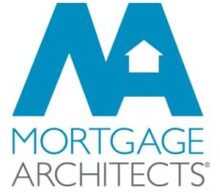The RRSP deadline has come and gone for another year. Did you join the frenzy of last minute savers by contributing to your RRSP this year? For the typical Canadian family Canadian, it can be difficult to set financial priorities. You only have two paycheques (only one if your partner stays home and raises the children), but so many different priorities to juggle. Common financial choices include repaying debt like your mortgage and credit card and contributing to RRSP and TFSA. Let’s take a look at each and see when it makes sense to choose one over the other.
Mortgage
With mortgage rates at record lows, it just doesn’t make sense to neglect long-term savings. The old school mentality of paying down your mortgage as quickly as possible may have made sense two decades ago when rates were higher, but times have changed. Defined benefit pension plans are no longer prevalent – only a third of companies offer any pension plan at all.
Skyrocketing real estate prices means we’re taking on bigger mortgages than ever before. If you wait until your 50’s or 60’s to start saving for retirement, that leaves you with little time to build a sizable nest egg. The last thing you want to do is invest all your money risky investments, only to see the market correct, forcing you to delay your retirement.
It’s best to take a balanced approach to saving for retirement and your mortgage. While reaching debt-freedom is a good financial goal, it’s not if you find yourself house rich and cash poor in retirement.
RRSPs
With mortgage rates showing no signs of heading up anytime soon, you should seriously consider contributing to your RRSP. Rather than contributing at the last minute, it’s best to follow the sage advice of The Wealthy Barber and pay yourself first. That means setting aside money each week for your RRSP. For example, if you’re paid semi-monthly, you can set aside $250 to be invested in your RRSP.
With your money out of sight, out of mind, you’ll be less tempted to spend it. Instead of investing one lump sum at the high or the low of the market, you’ll invest throughout the year and benefit from dollar cost averaging. As long as you’re able to achieve an investment return greater than your mortgage rate, you’ll come out ahead. That shouldn’t be difficult with today’s rock bottom mortgage rates.
Credit Card Debt
If you’re carrying high interest credit card debt, it’s hard to make a case for paying down your mortgage sooner or contributing to your RRSP. With retail credit cards charging as high as 30 percent interest, you should aim to pay down your credit card debt at all cost.
Two options you should consider are a balance transfer and HELOC. With a balance transfer you can transfer your outstanding balance to a credit card with a low interest rate and aggressively pay it down. Another option is a HELOC; you can tap into the equity in your home and use it to repay your credit card debt at a lower interest rate.
Before considering both of these options, you need to be fully committed to repaying your debt. If you’re constantly overspending, these two options won’t solve the problem.
TFSAs
Introduced in 2009, the TFSA has been a hit with Canadians. Despite the fact we can only contribute $5,500 per year, Canadians are contributing more to their TFSAs than their RRSPS. If you’re in a low-income tax bracket, saving for retirement in your TFSA instead of your RRSP can make sense. With a TFSA you won’t get a tax refund like RRSPs, but your money will grow tax-free inside. You also don’t have to pay taxes when you withdraw your money.
Don’t let the name fool you – you don’t have pay to park your money in a saving accounts. In fact, you can choose the same balanced fund you’d invest in your RRSP. As long as you’re able to achieve a higher rate of return than your mortgage rate, contributing to your TFSA makes sense.
